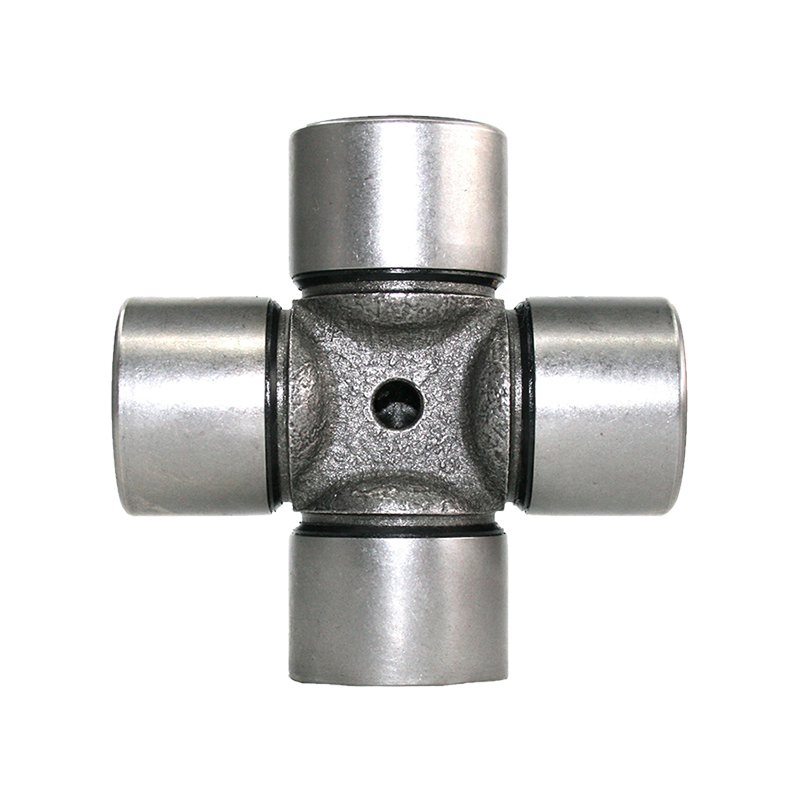Universal joints with pressed bearings bring innovation to the traditional drive shaft design, promising not only better performance but also enhanced durability and reduced weight. These joints are crafted from advanced materials that allow for a thinner, lighter cup body without sacrificing strength, making them ideal for high-performance applications where every gram counts. But for professionals considering a switch, the big question remains: Are these pressed-bearing universal joints compatible with standard drive shafts, particularly in replacements for brands like INA and SKF, or do they require modifications?
The good news is that these universal joints are generally designed with compatibility in mind, meaning they are often well-suited to standard drive shafts. In fact, their compatibility with established industry brands like INA and SKF speaks to their adaptability and ease of integration. The pressed-bearing design, which secures the bearings tightly in place within a thinner body, reduces vibration and provides a more stable, efficient joint under stress. This stability is key when fitting into existing drive shafts, as it ensures minimal play and optimal alignment, leading to smoother operation. Moreover, pressed-bearing universal joints are commonly manufactured to match the dimensional and load-bearing specifications required by standard shafts, reducing the need for custom fittings or additional components.
In practical terms, using these joints as replacements for INA or SKF models typically does not involve complex modifications. Manufacturers of pressed-bearing universal joints take into account the rigorous specifications demanded by OEM and aftermarket standards, which makes the replacement process relatively straightforward. The precision in tolerances—often down to very fine margins—ensures these joints align properly and provide the same (if not better) load-bearing capacities as their conventional counterparts. The design enhancements, such as a thinner yet robust cup body, result in a reduced overall weight for the drivetrain, which translates to improved fuel or energy efficiency and less wear over time. This weight reduction also means less inertia, contributing to quicker acceleration and deceleration responses, which can be a crucial advantage in high-performance vehicles.

A key benefit of this type of universal joint is its resilience under extreme conditions, including high torque and rapid directional changes, common in both automotive and industrial settings. The choice of high-grade materials and the secure pressing of bearings allow these joints to handle greater stresses than many traditional alternatives. For those replacing universal joints in performance-driven or high-stress applications, these pressed-bearing models are specifically engineered to withstand temperature extremes, heavy loads, and frequent speed fluctuations without loosening or misaligning. For professionals looking to replace INA or SKF joints in machinery or vehicles that experience demanding operational environments, the pressed-bearing variant offers reliability and an extended service life that can lower long-term maintenance costs.
Of course, the question of compatibility doesn’t stop at physical fit; it also involves practical considerations like installation and maintenance. While pressed-bearing universal joints are straightforward to install, as they usually fit directly into standard housings, some adjustments may be beneficial depending on the condition of the existing drive shaft. For example, if the original shaft has seen significant wear or if specific tolerances are not met, a slight rebalancing of the shaft might be necessary to achieve peak performance with the new joint. Fortunately, maintenance is also simplified, as these joints are typically pre-lubricated and designed to retain lubricant better than standard types, reducing the frequency of re-lubrication. This feature is especially useful in high-performance or heavy-duty settings where downtime for maintenance can be costly.
Cost is another aspect worth considering when assessing compatibility. Pressed-bearing universal joints may come with a slightly higher initial cost due to their advanced materials and design, yet they offer long-term savings by reducing the need for frequent replacements and minimizing wear on the drive shaft. Their lower weight and superior design contribute to reduced fuel or energy consumption, an attractive feature for companies seeking efficiency and sustainability. This translates to financial savings as well as operational benefits, making these joints a compelling choice for professionals upgrading or maintaining high-performance drive systems.

 English
English Español
Español 中文简体
中文简体


















Contact Us